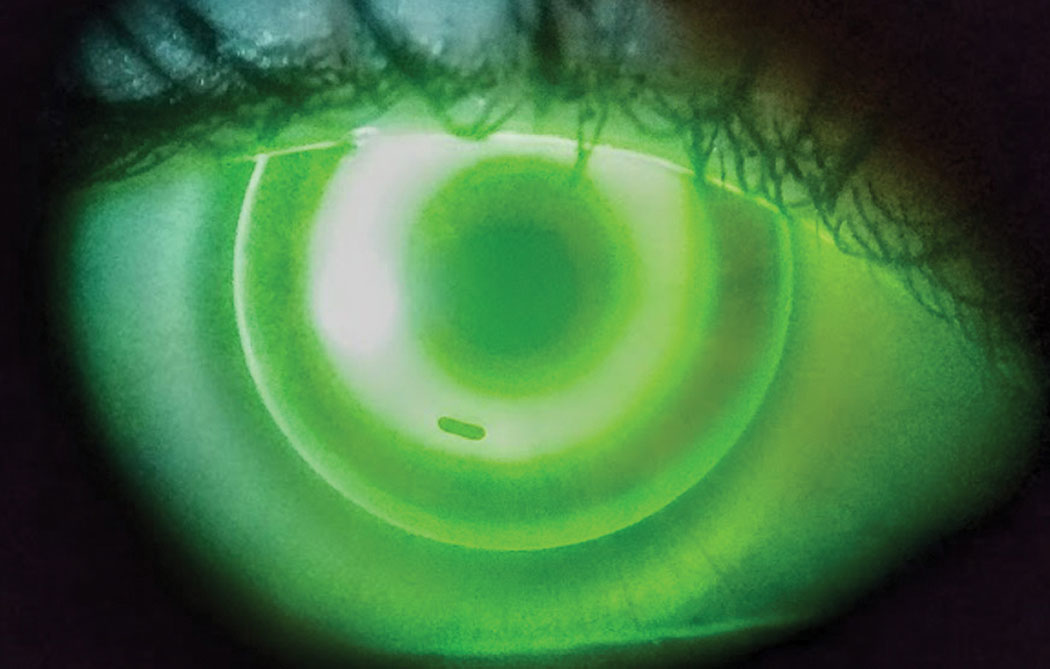 |
| Ortho-K is a viable option for patients with myopia or other refractive error. Photo: Dan Fuller, OD. Click image to enlarge. |
Myopia and other ocular conditions routinely rely on ortho-K for treatment, with a recent investigation reporting this method is safe and predictable in both children and adults, who show relatively few serious adverse events.
The investigation included 204 eyes of children and 392 eyes of adults who were treated over a 33-month period. The study ran from 1997 until 2015. In addition to myopia management, ortho-K was also used to treat refractive correction in the participants.
Considering ortho-K’s safety profile, corneal staining remained the most frequent complication of ortho-K, but this was less common and severe in children. A larger percentage of children (66%) were free of complications compared with about 55% of adults. The incidence of microbial keratitis was only about seven cases per 10,000 patient years in adults, while no cases were reported in children. Only one event of microbial keratitis occurred in adults, with none occurring in children. Adverse events including higher myopia, higher anterior corneal eccentricity and smaller anterior corneal horizontal radius increased the risk of repeated episodes of corneal staining, the study authors found.
During the first year, roughly 17% of children and 33% of adults stopped wearing the lenses, which mirrors other contact lens modality dropout rates, the team said. For children and adults who had successful ortho-K treatments of at least one year, approximately 89% and 96% of eyes had a predictable refractive outcome, and efficacy was 0.98 and 1.01, respectively.
“With a percentage of lens discontinuation similar to other lens wearing modalities, ortho-K may be considered a valid strategy to increase patient long-term loyalty to visual care providers and an effective alternative to other forms of visual correction,” the authors wrote in their paper.
Gispets J, Yébana P, Lupón N, et al. Efficacy, predictability and safety of long-term orthokeratology: an 18-year follow-up study. Cont Lens Anterior Eye. November 14, 2021. [Epub ahead of print]. |

